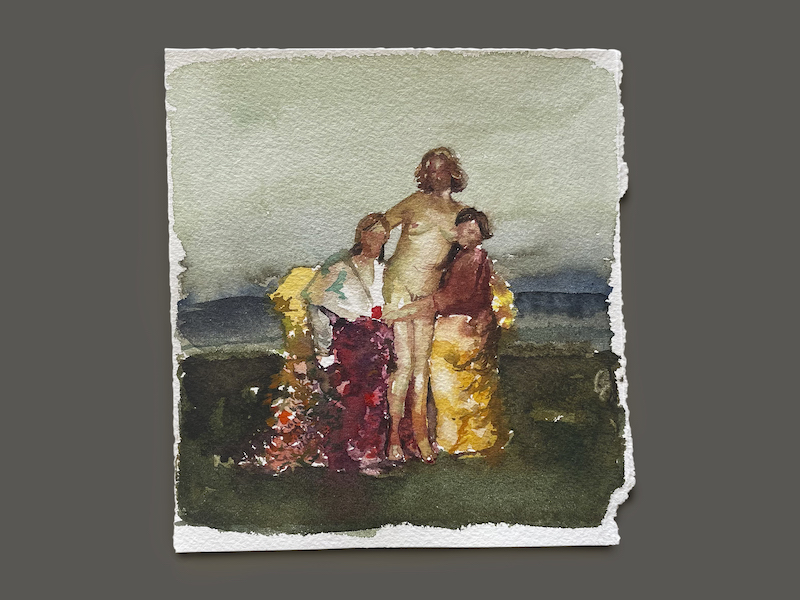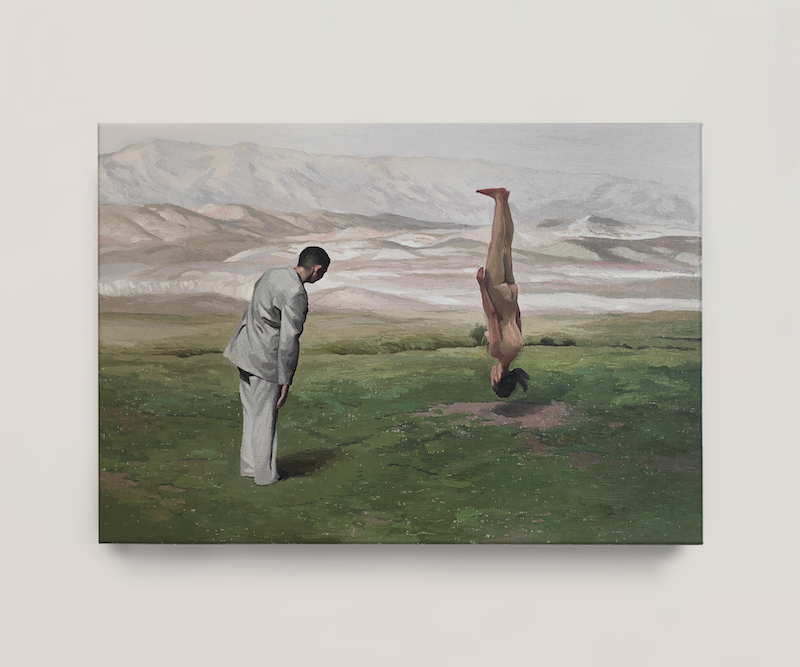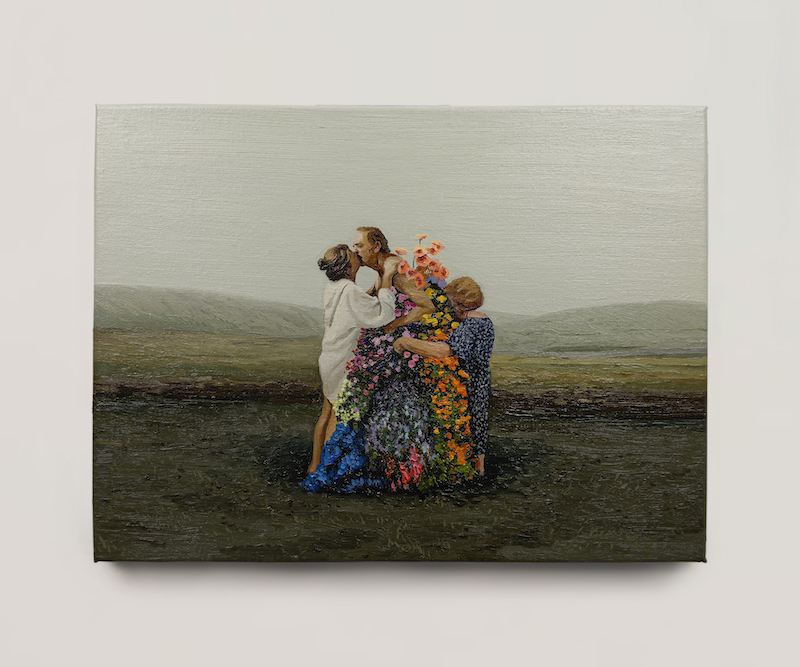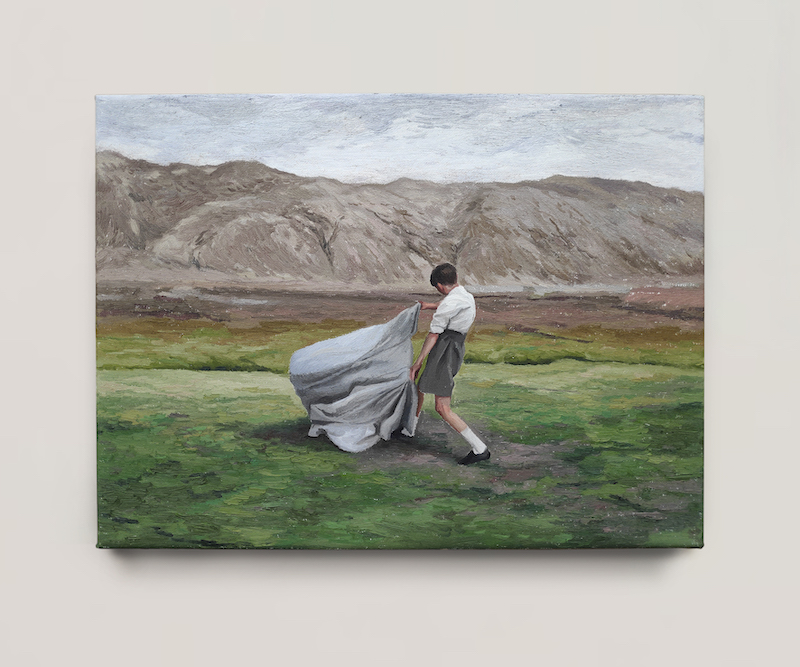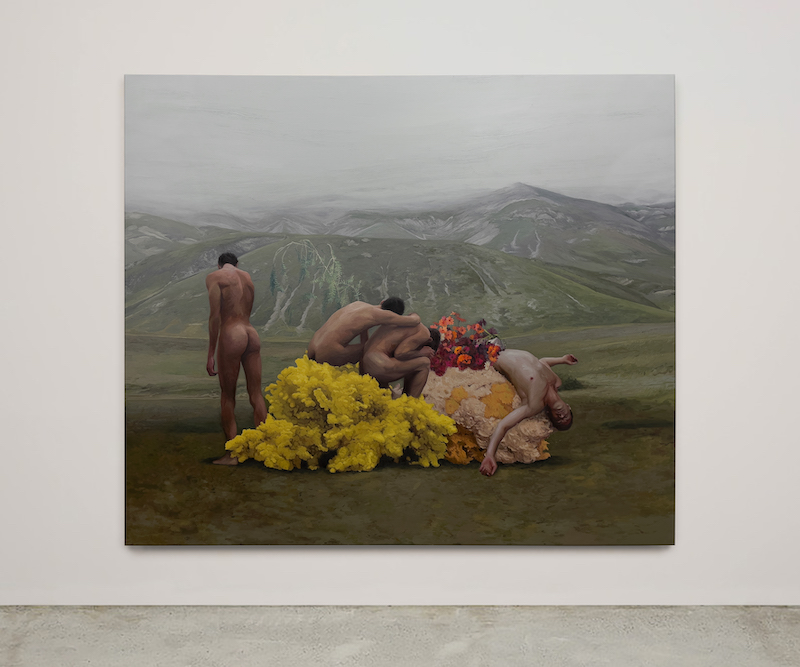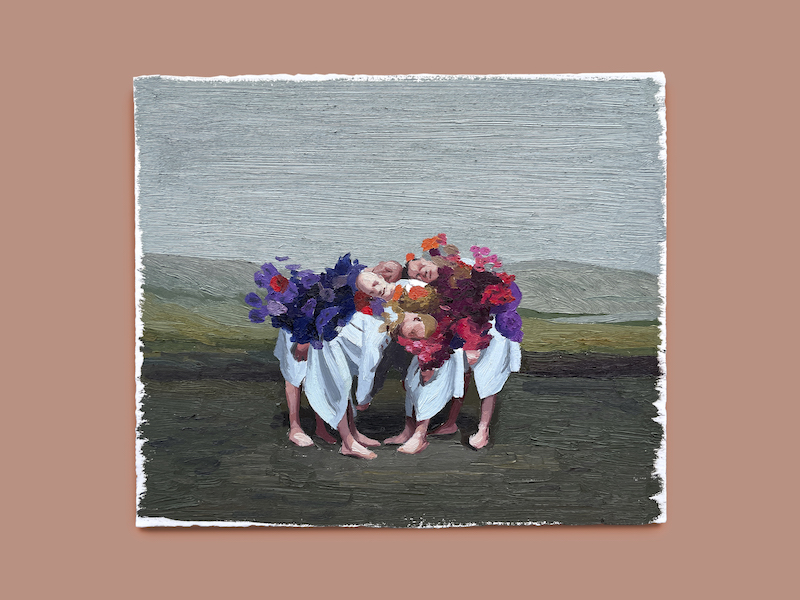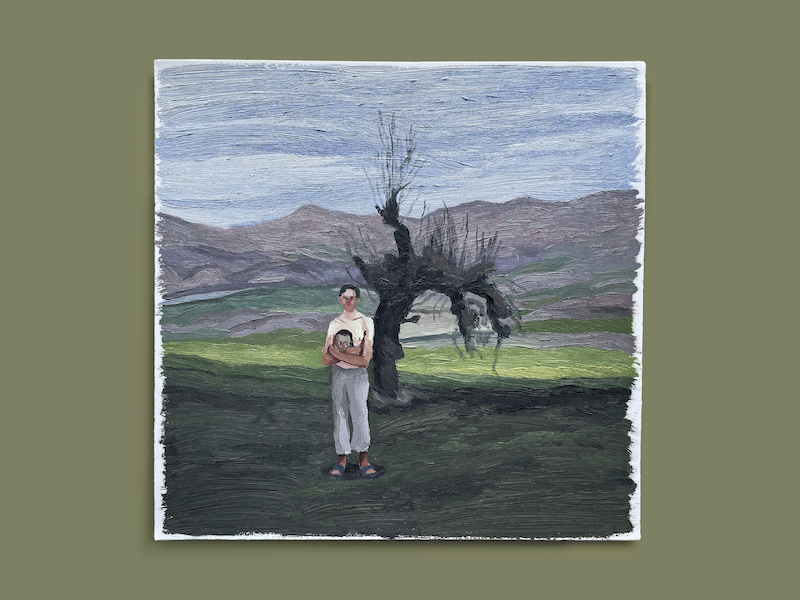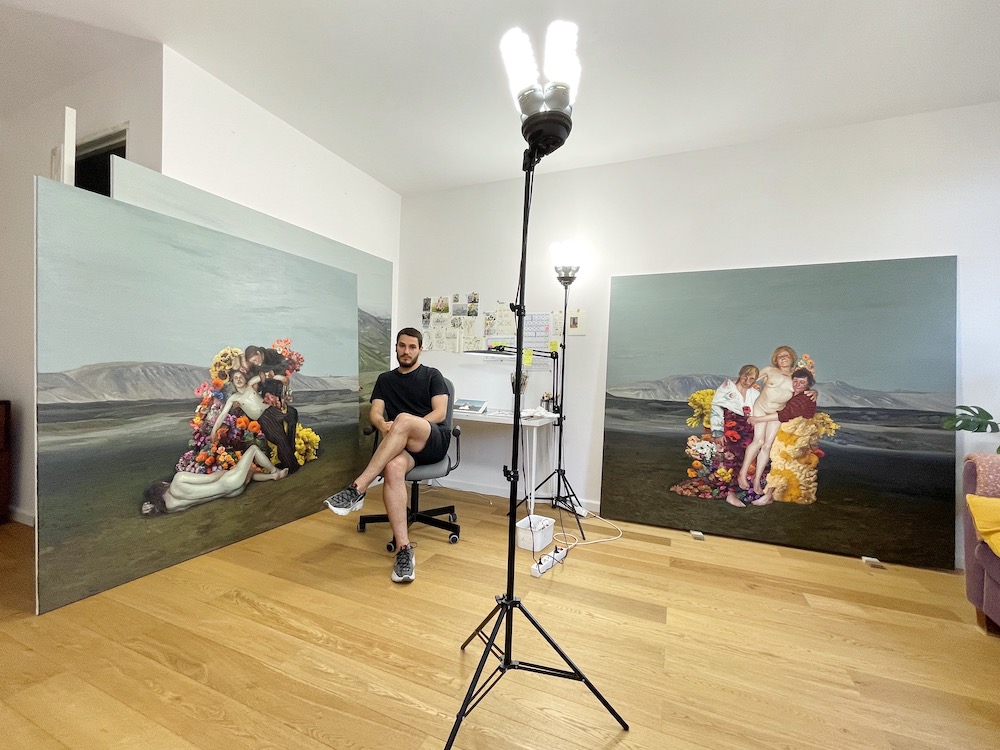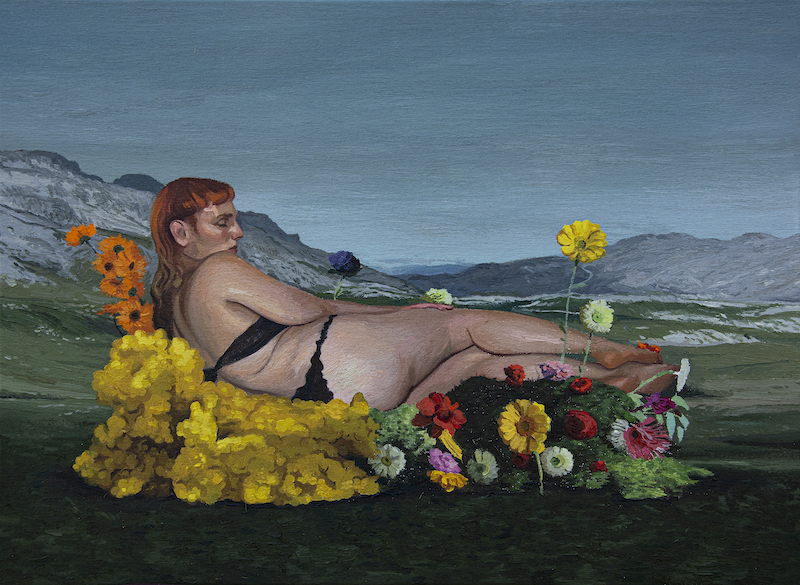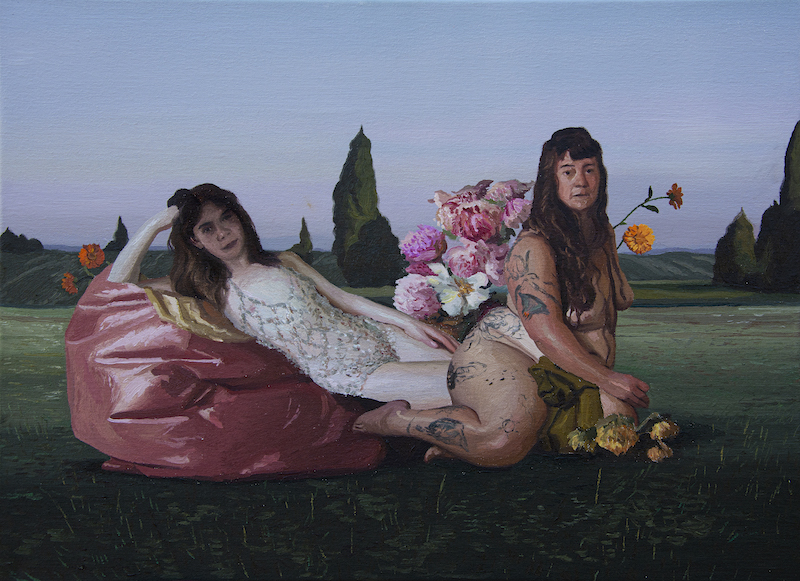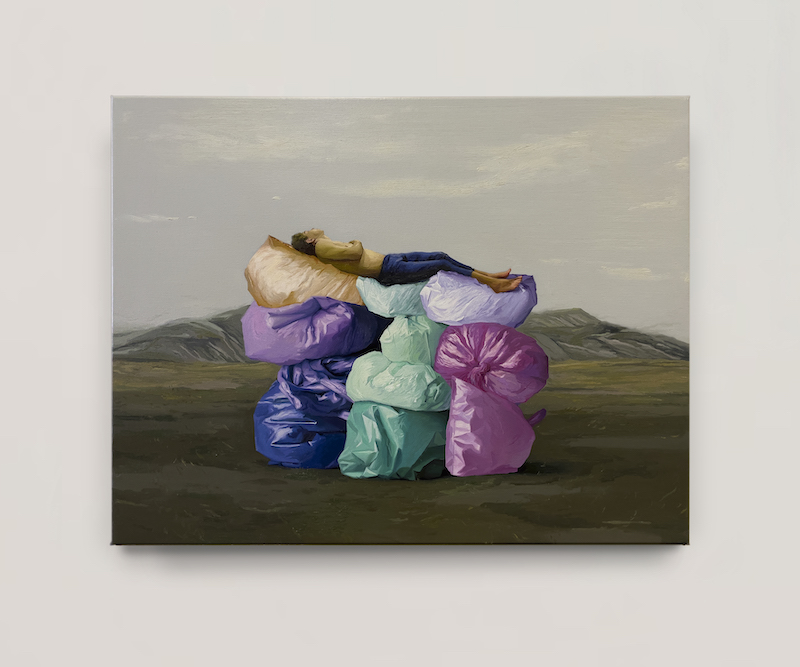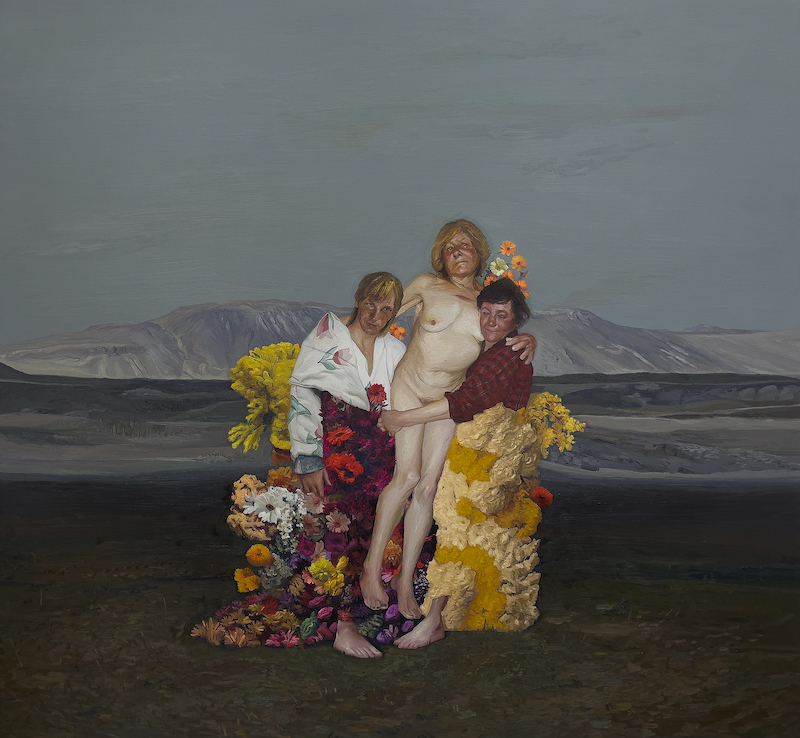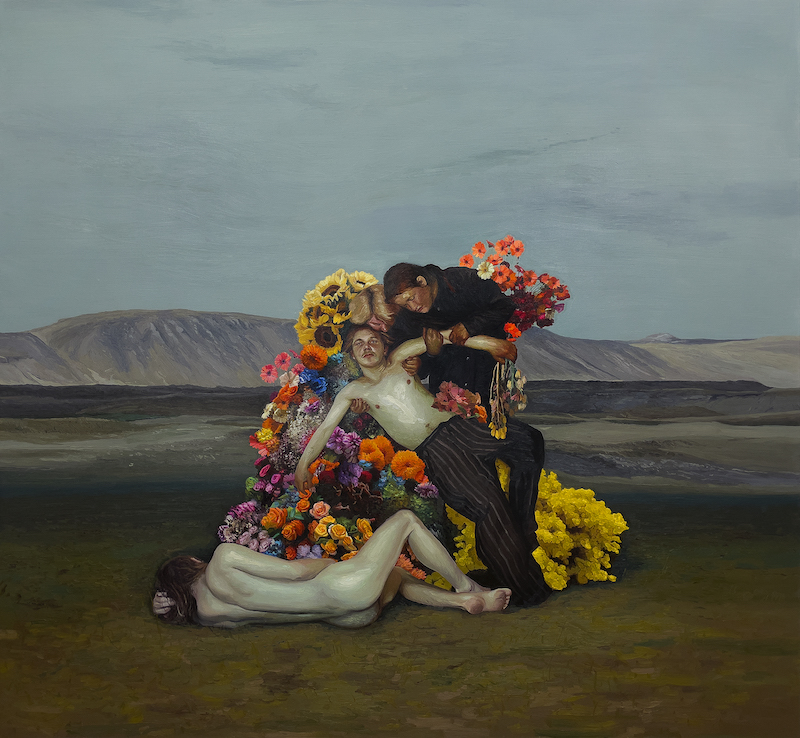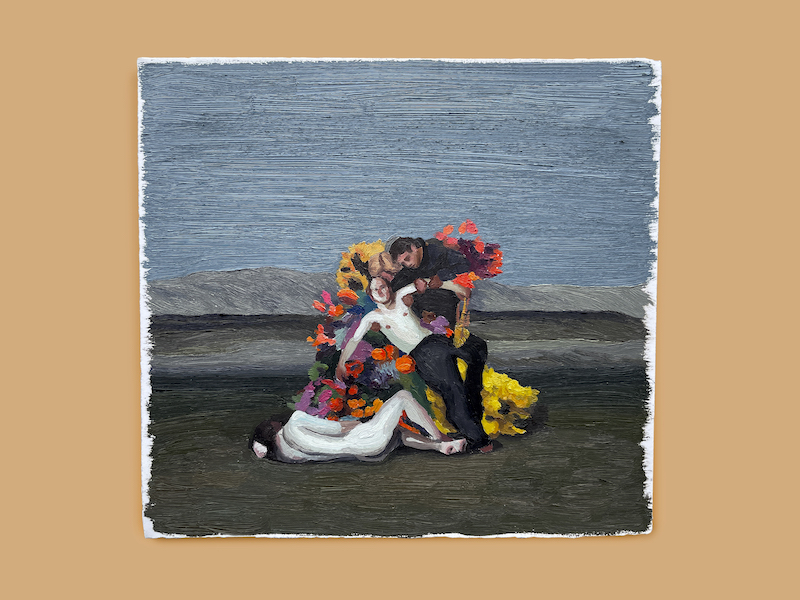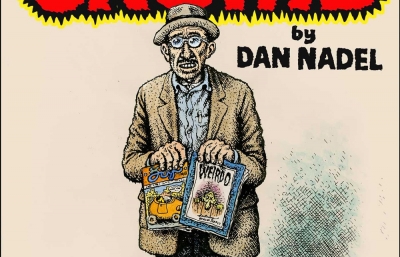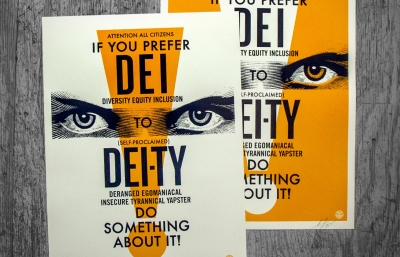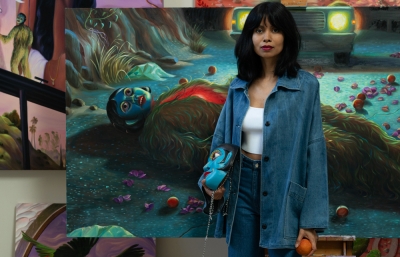You know the classic story—someone brimming with talent, driven by the urge to create and coming to fruition only after facing life’s most surprising hurdles. Choosing the wrong directions and hitting dead ends along the way often provide experiences, realizations, and memories that eventually fuel work which finally makes the difference. Such is the arc of Javier Ruiz, whose frequent journeys between La Carolina and Madrid branded his vision of the world, along with the portraits he painted in an effort to reach the excellence he saw in the art books he studied.
Initially working at his family home in Spain years ago, the artist keeps coming back to that same intimate setting over and over again. The quiet and familiarity provide a perfect setting for him to thoroughly scrutinize technical and pictorial aspects of his work. Browsing his phone and creating rough sketches, exploring possible color palettes and tools, he finally makes the most poignant landscape and portrait compositions, many inspired by the Andalusian Plains.

Sasha Bogojev: How about we start with the beginning—when did you get into art and were you one of those kids that always liked to draw and paint?
Javier Ruiz: It’s pretty crazy actually… When I was really young, I hated painting because my mother kind of forced me to do it since she thought I was doing it so well. So sometimes I would, but I think that is very boring for a child. I wanted to build stuff with boxes, I wanted to imagine.
But it’s interesting that when I would see a classic painting at grandma’s home or something, I would always examine them from up close. I don’t know why, but I enjoyed seeing what happens in the painting, in its little details. So when I grew up a bit, at the age of 14 or 15, I was totally lost and I started to draw more. I got into graffiti and from that point on. I got more interested and eventually went on to study illustration. But I didn’t really like it, and I always wanted to paint instead.
And you never studied painting?
No. I did some courses here and there, but never studied fine arts, at least officially. At home, I would spend all the money on art books, like about Klimt or Da Vinci, and I’d just study those.
So the fact that you’re now working from home is pretty standard for you? For a while, did you simply reject the outside world?
Yes, I always worked from home. I shared some studios a few times, but I was mostly at home, and because of that, actually had no idea what was happening out there. My focus was on classical painting and my books. I was just being silly because I kept thinking that contemporary art is shit, so I wanted to learn about masters and classical works and just didn’t care about the rest. But when I moved to Sevilla later on, my mind finally opened as I was hanging with other artists and other people, so I started exploring a lot more.
Is this when you started making work in your current style?
While I was living in Madrid, I was painting works with figures, sometimes of myself, sometimes other people, but I always copied other historically important painters. As I was developing, I started putting my friends in different landscapes, without any particular purpose but simply placing them there. So after a brief trip to the US, I moved to Sevilla and this is where I completely changed. Still today I believe that when you’re young, you need to try everything before you can do something important.
Did the trip to the US influence your practice?
No, not really. And again, I was only at the place where I stayed and didn’t know about anything that was happening around me. You need a car to go anywhere, and since I was really young and didn’t know anyone, I just stayed at home and painted.
What changed when you went back to Sevilla?
I actually got totally lost again. I was making good money with my classic-inspired paintings before, so when I started trying new things and installations, it all just crashed. I wanted a challenge. I wanted to do something new, to do more than that.
What kind of work were you making then?
I started making weird paintings and installations, but that was very important for me. I lost the fear of trying new things. I lost the innocence, and my mind completely changed. I was determined to make something new, not by taking an existing thing from the outside and remaking it, but by taking something from inside me and putting it outside. So, at that point, I started to not care about what’s happening around me, and instead, I was focused on what I wanted and could do to contribute to contemporary art. 
A few artists I’ve talked to have had similar experiences.
Yes, it’s important to have that experience and understand that we are living in the present and can do things that we want to do and not the things we feel are expected.
It sounds like a healthy fresh start.
I arrived in Amsterdam because my partner got a job. I didn’t know anyone, but I planned to do sports and paint when I arrived, but my bag with my sports and painting equipment got lost. So I was stuck at home, broke and without anything to do. I only had watercolors that my partner bought to keep me busy. [Laughs]
How long ago was this?
This was around Christmas of 2019. It was a bit frustrating to think of being in my thirties with nothing and nowhere to go, nothing to do. So I started painting with those watercolors and the concepts of the work I am making started to appear. I was thinking of staying in Amsterdam and finding a job, or going back home to develop these ideas, since I had no money or materials to work here. I told a friend that I had a feeling in my stomach that I needed to try these ideas but didn’t have the money. He offered to help me out, and I calculated I needed €972 to make it happen. Luckily, some collectors bought a few works so I could go back to Amsterdam and continue working, right before the pandemic.
How did it happen that you had your big break during the pandemic lockdowns?
Instagram is a big part of it. While I was changing my paintings, I also changed my entire approach to everything. I believe you have to approach any practice in a professional manner. So I started to take better images of my work with the hope to get more attention, and it worked. This is when my gallery in Barcelona found me and I started working with my agent, Gabriel Rolt. With him, I’m planning on doing a big solo show here in Amsterdam in the spring.
It feels like you really needed these strange circumstances to develop this work.
I always felt that if you really want to do something, you will make it with however little you have. Also, I feel that it’s better when you come from the bottom, because you need that pain to climb up and create something.
Why did you start introducing these strange, bohemian characters?
I like to believe that I actually don’t know [laughs], because when I think a lot, I get totally lost. For me, it’s better to just feel something, even without knowing what it is or why you feel it. If I don’t know the story behind it, that means that the viewer can’t know it either, so they can imagine their own. If I know what I’m doing, then the viewer might realize what I’m doing; but if I don’t know, it’s impossible for the viewer to guess that.
I enjoy this uncertainty about what’s going on. I guess you purposely construct this suspense?
Yeah, I like to make it weird like that. Maybe something is happening, maybe it’s about to happen, or maybe it already happened. I like to generate that type of ambiance. I like to show something but not give out clues why it’s happening. Of course, some elements, like the flowers I’m painting now, I know where they’re coming from. It’s because my mom loves flowers. So maybe by putting them in the work, I’m talking about her, though I’m not sure, and I don’t want to think about it too much either.
I guess that explains the idea behind this ambiguous light that’s between dusk and dawn?
The idea is that such uncertainty pushes the strangeness of the scene. So the colors that construct such a light setting are meant to intensify that ambiance. But I always start with the figures as they direct me to the other elements.
And how do you go about finding those?
I’m always searching. Most of them, like 80%, come from Instagram. I just take screenshots when I see something, an expression, a posture, anything, and I might use it years later.
I’ve seen you using elements from the photographs by Boris Mikhailov and such. How do they fit with your concepts and what do you like about them?
It’s really the same as any other images that I find online or on Instagram. I only take the figures, or one aspect, without using the context or copying the work. I feel like appropriation is a good way if you’d like to make something new with something existing. What I like about them is they can be used well to show decadence. Humans have the urge to see and have beautiful things, so by contrasting people from photographs against beautiful flowers or adding elements of kitsch in the middle of a deserted landscape, I show the decadence of humanity.
What is the motive for creating the dry, coarse texture in your work?
I always tried to do something with my oils. So I mixed them with another material to make them thicker. This way, when I paint, I’m almost sculpting the image because I really enjoy feeling the brush molding the paint, and it's way easier for me to control it. I also like to use different brushes, also old ones that deform my stroke and create these imperfections that I enjoy. This way I’m mixing the paint on a canvas, putting the base with a regular brush, and then caressing the paint with these broken ones.
That actually sounds very painstaking. Is it?
It’s really fast, I think. Because, with this technique, you have to be really focused and concentrated, but if you know what you want to do, it’s really easy. Maybe you have to try it yourself [laughs].
This is why I call you El Medico. You’re always so tidy and so well organized.
Yes, for this to work, you have to be really organized and have your tools always clean. I mean, I work from home, so I have to keep things very clean anyway. It's important that the colors I put on the canvas are the color that stays in the image.
Is decadence a theme that permeates your work, that occupies your head as you make the work?
I think all my current work comes from some sort of grey. I guess it’s how I feel at the moment. But again, I don’t like to think about that too much before I start creating images, and I just go straight onto the canvas and what feels right at the moment. By doing so, I allow them to speak to me and tell me how I’m feeling or might be feeling.
Do you read them afterward to try to understand what was happening?
No, I don’t want to. I do the paintings for the viewers, not for me. If I was making them only for myself, I wouldn’t want to show them.
@JavierRuiz_studio

